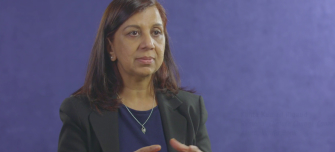The EO for Africa Symposium 2024 opened in late September at ESA’s ESRIN facility in Italy, initiating four days of discussions on how Earth Observation (EO) technologies address Africa’s pressing challenges. In her opening remarks, Simonetta Cheli, ESA’s Director of Earth Observation Programmes, emphasised the Global Development Assistance (GDA) programme’s pivotal role in mainstreaming satellite data use across the continent. Cheli highlighted how EO supports climate resilience, improves food security, and enhances agricultural practices by tracking water stress, droughts, coastal erosion, and urban development. Collaborative efforts were highlighted as key to leveraging these technologies for sustainable development.

GDA’s contributions were also central to key panels, such as the International Cooperation Panel chaired by Benjamin Koetz, Head of ESA EOP Long-term Action Section, and the International Initiatives Panel featuring ESA EO Application Specialist Alex Chunet. Both sessions reinforced the importance of international cooperation in applying EO for climate resilience and sustainable growth.

Tackling Marine Pollution in West Africa: A Highlight of GDA’s Impact
One standout presentation showcased GDA’s initiatives in combating marine pollution in West Africa. Research led by Planetek Italia and the University of Palermo, in collaboration with GDA partner World Bank, was presented under the session “Addressing Marine Pollution in West Africa: Insights from Plastic Drift Modeling.” The research focused on plastic waste management using EO-based services and plastic drift modelling in Liberia’s rivers, a significant source of marine pollution.
The application of the TrackMPD Lagrangian model, utilising Copernicus marine data, mapped plastic particles’ movement, pinpointing pollution hotspots. Through partnerships like the West Africa Coastal Areas (WACA) Resilience Investment Project, GDA guides policies and interventions that protect marine ecosystems and promote sustainable blue economy practices. This scalable approach demonstrates the adaptability of EO technologies for global water pollution mitigation.

Driving Resilience and Sustainable Development
The GDA programme builds on the legacy of the now inactive EO4SD (Earth Observation for Sustainable Development) initiative. A project in the Greater Banjul area of Gambia exemplifies GDA’s focus on disaster resilience, where EO data is used to assess flood risks, coastal erosion, and other climate-induced hazards. By integrating EO into early warning systems, local authorities can better predict and respond to natural disasters.
Capacity building is also key, with local stakeholders trained in the use of EO technologies, ensuring long-term sustainability and self-reliance in disaster preparedness. These efforts showcase how EO is used to address climate-related challenges, reduce vulnerabilities, and improve infrastructure planning.

The EO for Africa Symposium highlights GDA’s crucial role in addressing environmental and socio-economic challenges. By empowering decision-makers and communities with EO data, GDA is fostering a more resilient and sustainable future across Africa.
For more information on the EO for Africa Symposium and GDA’s contributions, visit the EO for Africa Symposium 2024 website.

For more information on the EO for Africa Symposium and the GDA programme’s contributions, visit the EO for Africa Symposium 2024 website.
















